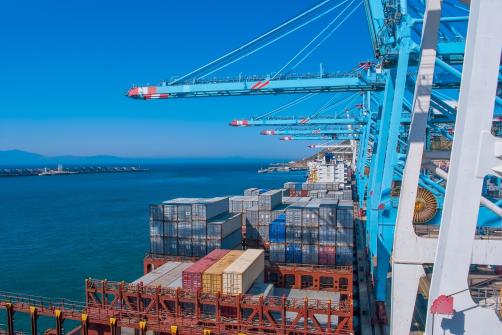Freight rates rose for the first time after nine consecutive declines!
According to the latest data released by the Shanghai Airlines Exchange on March 17, the Shanghai Export Containerized Freight Index (SCFI) rose 3.17 points to 909.72 points last week, an increase of 0.3%. Among them, the near-ocean line saw the highest increase, reaching 5.5%; the operations of the European line and the Mediterranean line also rose slightly, while the freight rates of the US East and US West lines decreased.
Last week, the freight rate per TEU of the Far East to Europe line rose by 13 dollars to 878 dollars, an increase of 1.5%, and it stopped falling for the second consecutive week; 3.9%. Near ocean lines rose by $10 to $190 per TEU, an increase of 5.5%.
On the other hand, the freight rate per FEU on the route from the Far East to the West of the United States fell by $2 to $1,161, or 0.1%, which was significantly narrower than the 3.08% decline in the previous week. The decline also narrowed to 4.8% from 5.47% in the previous week.
Industry insiders pointed out that the SCFI index stopped falling last week because the shipping companies expanded their space reduction, cargo owners shipped at the end of the season, and many Asia-Europe ships bypassed the Cape of Good Hope, saving the high tolls of the Suez Canal to absorb excess capacity. The effect is powerful, effectively preventing the freight rate from continuing to fall.
However, this does not mean that freight rates are about to bottom out. As the European trade volume began to return, some ships were full of cargo and dumped cargo, which supported the freight rate, and even saw an increase of less than 100 US dollars; Whether the price can stabilize on this remains to be seen.
At the same time, the freight rate of the American line is still falling. The CPI in the United States continued to increase in February, and the core consumer price increase was the largest in five months. The National Retail Federation (NRF) estimates that the volume of imported containers may decrease by 20% in the first half of the year, coupled with the return of many cargoes from the US East Line to the US West Line, is also one of the main reasons why the US East Line has fallen more than the US West Line.
The industry generally believes that inflation, interest rate hikes, wars, and the impact of the Bank of America's successive bombings on market psychology will take time to recover. If the consumer demand for people's livelihood is gradually digested along with the inventory, supplemented by China's rapid unblocking to drive the overall economic momentum to gradually activate, it is expected that the container shipping market will gradually recover in the second half of the year.
It is worth noting that the soaring freight rates during the epidemic caused many old ships to continue to operate. At present, the dividends of the epidemic are no longer there, and considering factors such as old ships not complying with new environmental protection regulations and high fuel consumption, old ships have begun to be dismantled, it is expected to further narrow the gap between supply and demand in the container shipping market.








